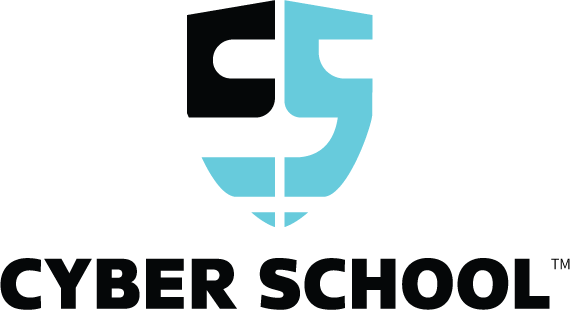Cyber Rangers
-
course overview
Syllabus | Cyber Rangers -
Zoom Links1 Topic
-
Module 1: Welcome to the Cyber SquadMorphing into a Cyber Ranger3 Topics
-
What’s in the Digital World?3 Topics
-
Cyber Threats: Meet the Villains3 Topics
-
The Cyber Defense Arsenal3 Topics
-
The Art of the Hack3 Topics
-
CTF: The First Mission2 Topics
-
Red Ranger – Network Defender (Sessions 7-10)The Power of Firewalls3 Topics
-
DDoS Attacks: When Too Much is Too Bad3 Topics
-
Wi-Fi Security: Is Your Home Network Safe?3 Topics
-
CTF Challenge – Network Defense
-
Blue Ranger – Cryptography Expert (Sessions 11-14)2048 Game - Understanding Code Logic3 Topics
-
The Secret Language of Codes3 Topics
-
Modern Encryption: How Does It Work?3 Topics
-
Breaking the Code: Ethical Decryption3 Topics
-
CTF Challenge – Cryptography
-
Yellow Ranger – Ethical Hacker (Sessions 15-18)Hacking for Good: The Role of Ethical Hackers4 Topics
-
Social Engineering: Trick or Treat?3 Topics
-
Web App Hacking: Finding Weak Spots4 Topics
-
Cross Site Scripting4 Topics
-
Green Ranger – Breaking the codeCookies and Data4 Topics
-
CTF Challenge – Javascript
-
Module 3: Cyber Crisis SimulationsIncident Response: Save the City’s Power Grid!3 Topics
-
Incident Response : Cyber Atack Unfolds3 Topics
-
Incident Response - Defend the Powergrid3 Topics
-
Incident Response : Lessons learned and report writing3 Topics
-
Understanding Data Breaches4 Topics
-
Looking for clues in a breach3 Topics
-
Data Breach Mystery: Find the Insider
-
Ransomware Attack: Pay or Fight?2 Topics
-
Module 4: The Cyber Rangers Final BattleMega CTF Tournament
-
Cyber Ranger Graduation
-
Where to Next? Exploring Cybersecurity Careers
-
Optional Content & Enrichment (10 Extra Sessions)Geographical Mapping
-
Red Team vs. Blue Team
-
Advanced Forensics
-
OSINT Challenges
-
Spy Games
-
Lockpicking 101 (Virtual)
-
Defusing a Virtual Bomb
-
AI in Cybersecurity
-
Create Your Own CTF Challenge
-
Internet of Things (IoT) Hacking
-
Cyber Rangers Hall of Fame
Participants 10
Lesson Companion: The Art of the Hack
How Hackers Break In — and What We Can Learn From Them
📝 Use this guide to take notes, answer key questions, and reflect as you follow today’s presentation and lab.
🎯 What I Will Learn Today
- The six stages of a real-world cyberattack
- How hackers think and what tools they use
- The difference between ethical and malicious hacking
- How to analyze websites for common security weaknesses
- Why it’s important to defend systems before they are attacked
📓 Notes by Topic
🧠 What Is Hacking?
Hacking originally meant:
🖊 _______________________________________________________
Today, it often refers to:
🖊 _______________________________________________________
Types of hackers:
| Type | Description |
|---|---|
| White Hat | ________________________________________ |
| Black Hat | ________________________________________ |
| Gray Hat | ________________________________________ |
🔎 The Hacker’s Mindset
Hackers don’t try to break what’s strong — they look for what’s:
🖊 _______________________________________________________
They rely on:
- Logic and observation
- Weak security or human mistakes
- Tools that are easy to find online
🔗 The 6-Stage Attack Chain
| Stage | What Happens |
|---|---|
| 1. Reconnaissance | _________________________________ |
| 2. Scanning | _________________________________ |
| 3. Access | _________________________________ |
| 4. Payload | _________________________________ |
| 5. Escalation | _________________________________ |
| 6. Exfiltration | _________________________________ |
🧰 Hacker Toolkit
Tools often used by attackers:
- Port scanners (e.g. Nmap)
- Password crackers (e.g. Hydra)
- Keyloggers
- Malware generators
- Social engineering kits
🖊 Write one tool you learned about and what it does:
🔐 Real-World Examples
Case 1: A student hacked the school gradebook
🖊 What was the weak point? _____________________________
Case 2: Ransomware attack on a hospital
🖊 How did it start? ____________________________________
🖊 What was the damage? _______________________________
🔍 Practice: Spot the Flaws
What are some common flaws hackers look for?
☐ Weak passwords
☐ Public data online
☐ Open ports
☐ Users who click links without checking
🖊 Add one more weakness you learned about:
🧪 Lab Activity: “Find the Weak Link”
Goal: Use browser tools to inspect a challenge website and simulate a hacker’s early steps.
During the lab, I will:
☐ Open Developer Tools (Inspect Element)
☐ View HTML and JavaScript
☐ Look for hidden fields, weak code, or exposed credentials
☐ Try modifying inputs or checking script logic
☐ Analyze how a real hacker might exploit this
💬 Lab Reflection
🖊 What was the most interesting thing you found?
🖊 What made the site vulnerable?
🖊 How could a developer fix it?
🛡️ Cyber Ethics
What makes a hacker ethical?
- Always has _________________________
- Works to ___________________________
- Never uses skills to ________________
✅ Cyber Rangers use knowledge to protect — not to harm.
💡 Final Reflection
- What did you learn about how real hackers work?
🖊 _____________________________________________________ - How does knowing this help you be a better defender?
🖊 _____________________________________________________ - What will you look out for in your own digital life?
🖊 _____________________________________________________
